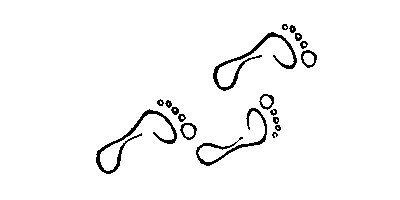Sickness is the worst thing that can happen to a runner – you wake up in the morning with a feeling of scratching in the throat or runny nose and you already know what’s coming – a break in training …. and yet it is only a small cold. Maybe you could run it through? Maybe a break in training is not necessary?
the subject of running during sickness comes back every year around the winter when the season of colds begins. Even the most experienced runner catches occasionally a cold or some other infection. Everyone has their own way of fighting the cold and every organism is different, requiring a slightly different approach. As I myself had this „pleasure” lately, I decided to write something for those who have doubts about how to approach the training during the time of lowered immunity.
NOTE: I don’t have the competence to provide professional health advice and everything I describe here, stems from my own experience, conversations with doctors, coaches and other runners as well as a variety of theoretical sources. Each organism is different and reacts in it’s own way. If you’re in doubt as far as your health is concerned, go to the doctor!
WHEN TO LET GO
As usual – there are two approaches. And as usual – „it depends”. From what? First of all, you have to consider whether this extra effort will be a stimulus for the body to recover faster or an unnecessary burden, which will only worsen your condition. With a slight cold and moderate effort your body can get an energy kick – faster heart rate, better oxygenation, warmed up muscles and accelerating the blood flow may result in a faster recovery.
On the other hand, if the body is heavily burdened with fighting the disease or the kind of training you apply is too heavy, you can overload the body, which instead of fighting the disease will have to rebuild the energy reserves and rest. The immune system won’t be able to operate smoothly, and higher temperature generated during the workout may even harm us.
Therefore, everything is a matter of moderation and sense. If you run regularly and your body is accustomed to a few workouts a week, then you can afford to maintain lightweight gear and go through the disease without interrupting the training plan. However, if you are just starting or you’re running irregularly, rather take a break. You will not lose much and the risk is too high.
Moreover, you have to consider sickness symptoms. If you feel that a cold is coming, it’s best to wait a day or two and see if there will be a rapid development. If not, then you can go for a run. However, if you develop a fever, fatigue, muscle pain, swollen lymph nodes – categorically take a break.

Many runners use the „neck” theory, developed by David Nieman – a head of the Human Performance Laboratory at Appalachian State University. He stated that all the symptoms positioned below the neck (chest cold, bronchi infection, pain in the lungs, cough, shortness of breath, etc.) Is a „red light” for workouts. Whereas anything above the neck (runny nose, stuffy nose, headache) don’t constitute an obstacle to continuing training.
Personally, I treat the neck theory with a grain of salt – I think such black and white approach to illness is not always good – it’s sometimes hard to tell if it’s above or below the neck. Nevertheless, it’s always good to know this theory than not. It’s always one more argument for or against.
HOW TO RUN
While sick, even if it’s a slight cold, your body is fighting the disease. Going on a training, we want to aid in this fight, not disturb it. Therefore, we must be attentive to our training. Let’s make it a supportive week – runs should be a bit shorter than usual (if you usually run 10 km, this time make it 8 km) and categorically in the 1st zone. This way, you boost your metabolism, improve blood flow and raise body temperature. As a result, it should fight the disease easier.
I used to think that going for a workout while sick, I’ll have a higher heart rate (body is burdened, struggling with the disease, so the body temperature is higher). Meanwhile, it turns out that in such a case my heart rate is much lower, despite a general feeling of weakness. So cautious running can help you switch to a higher gear – unless you go over the top, such training should give your body a kick that carries on for some time after the training.
An additional advantage is that even if you go out for training with your nose clogged, during training vessels dilate, and you can breathe freely for a long time after the workout ;-)
WHAT TO EAT
While down with the sickness you should concentrate on a healthy and balanced diet. Drink a lot of fluids – good hydration will boost your metabolism and allow for faster filtration of all the impurities and toxins. Add to your diet all the products that enhance immune system. First and foremost – a lot of spices, like ginger or cinnamon. Additionally garlic and turmeric that have strong anti-inflammatory and bactericidal properties.

HOW TO PREVENT SICKNESS
- Plan your training ahead and make sure there’s a time for rest in it. If you just started running, run every 2-3 days instead of everyday.
- Mind your diet so that your immune system is in full potency to fight the infections
- Measure your resting heart rate mornings – any fluctuations indicate a time for rest
- If you keep the training journal (eg. in running app), add to every workout a fatigue evaluation (on a scale 0-5 pr 0-10). If you notice an increase in fatigue along with further training sessions, there’s a time for rest
- If you expect additional stress at work, adjust your training accordingly and replace heavy accents with an easy run
- During sickness let go or apply a supportive run, which will help you fight the sickness and not hinder it, overloading the organism
- Take care of a good night sleep – it’s hard to overestimate the value of a good rest and its influence to regeneration

If you find this article interesting, share it with others using the social media buttons below. If you don’t want to share, maybe at least like it? :-)
___________



